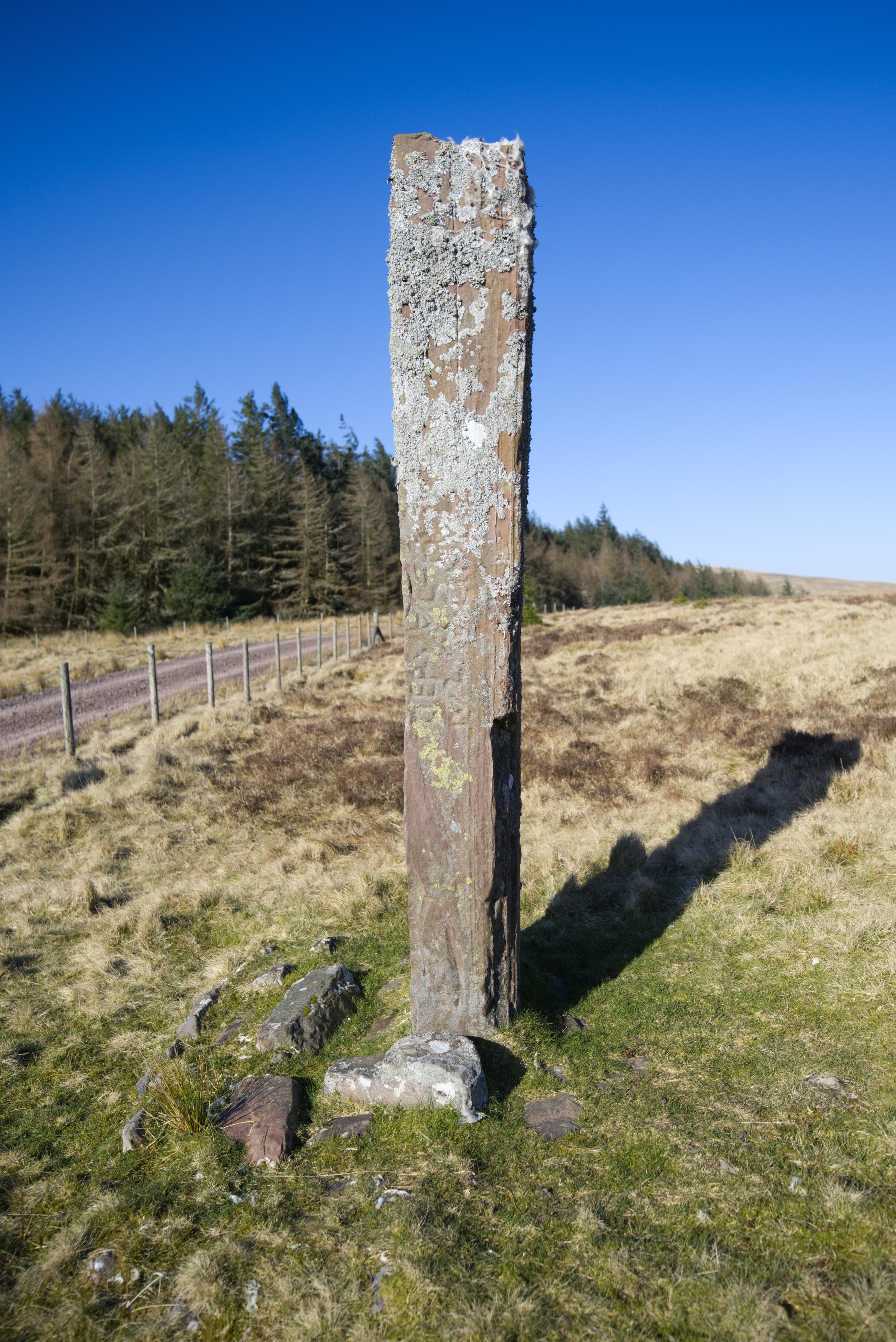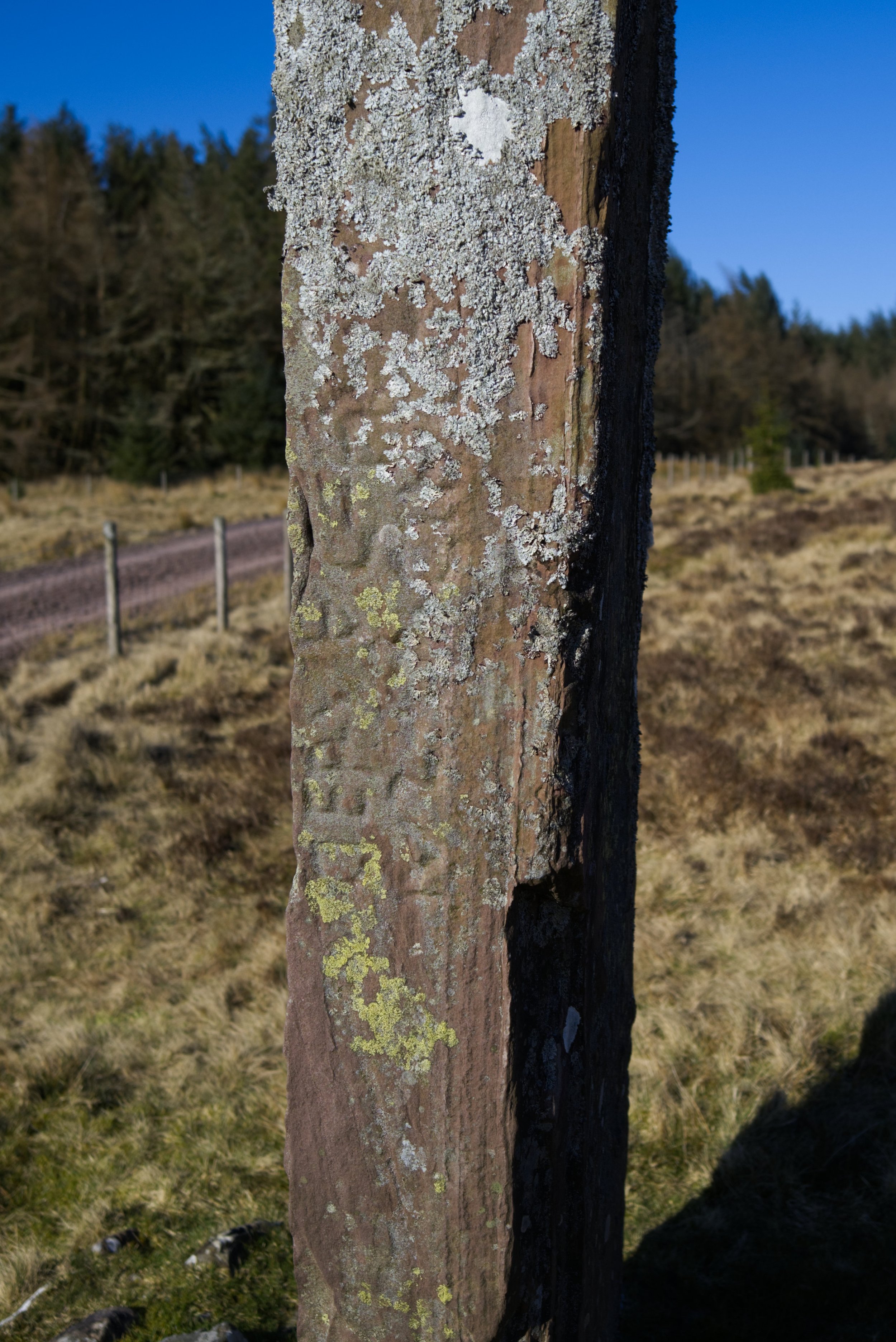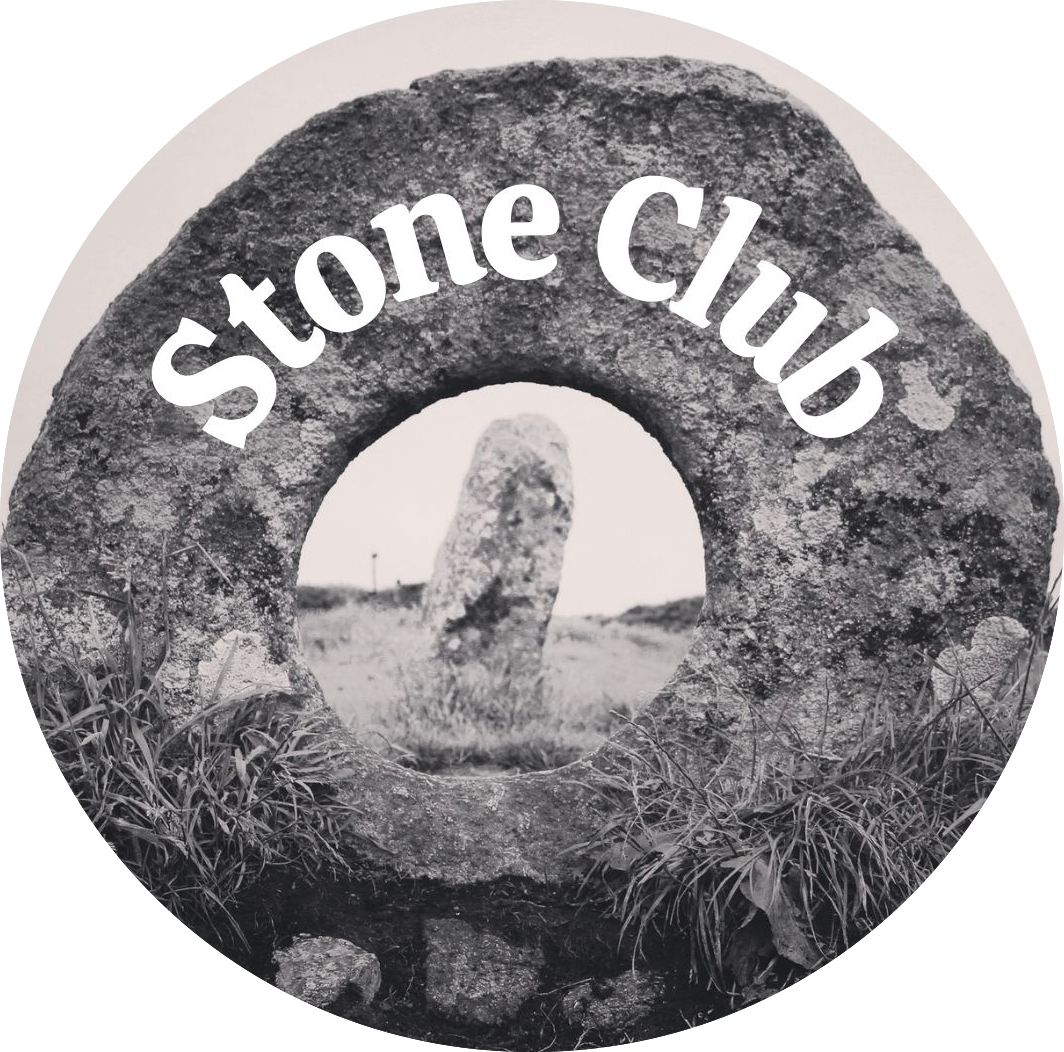Laurie Green (Member no: 342)
Maen Madoc
We peak the minor crest, and there’s Maen Madoc, gazing out towards the Nedd Fechan. The sad grey sea of death becomes flecked green moorland, dark purples and wheat-gold
Sarn Helen, laid in clay and river pebbles by the Roman Second Legion, runs the full length of Cymru. Towards the southern terminus, up the way from an even-then long abandoned marching camp at Plas-y-gors, Maen Madoc was made into a roadside monument to paternal love some centuries after the road’s construction. A parent mourned their child’s death here, one thousand several hundred and some years ago.
The inscription reads
Dervacius filius Iusti hic iacit
Here lies Dervacius, son of Iustus
Before that this was surely already a sacred Stone. Maen Madoc is too lovely a rock to have been ignored by the ancient cultures that built monuments to, and from, lithic splendour. Maen Ilia, just along the modern tarmacadam Sarn Helen, is another local Brecon beauty. Maenhirs in eustasia.
Now this section of the Roman Sarn Helen is a bridleway running through plantation conifers, perched brazenly on the otherwise naked southern slope of Fan Nedd. As we rise towards the maenhir from the north-east, a fractured sea of machine-felled firs expands to the left. Across the way the tract spared slaughter looks on nervously, perhaps beginning to fear they might be next.
We peak the minor crest, and there’s Maen Madoc, gazing out towards the Nedd Fechan. The sad grey sea of death becomes flecked green moorland, dark purples and wheat-gold stretching to a horizon punctuated by the turbines at Y Bryn onshore wind farm. The Stone is behind a fence. The land here is all enclosed, somehow owned.
Maen Madoc stands as a gnomon in the clear bright sky, casting shade back the way we came. The time is Now. At the base, within a ring of conspicuously green grass some smaller Stones have been arranged to form a rough altar. It draws me to kneel and pray (to what I am unsure), or to lay some small token. Bright white cotton grass seed catches on the sturdy moorgrass and the stone itself as it blows through, an offering brought by the winds.
The head and shoulders of the Stone are shrouded in rough lichen. This bright grey colony is a mutually beneficial collaboration between fungi and algae that might have lived here for thousands of years. It has formed a drape, protectively wrapped for warmth around a figure leaning slightly to one side, locked joints propping itself through the millennia.
An archetypal ship's anchor was at some point carved into the Stone. It now faces west, away from the intersecting spurs that hint at hidden waterways below and gesture towards the sea and Swansea Bay.
The anchor was a symbol of Christianity during the first three centuries Anno Domini after St Clement was drowned on an anchor by Trajan off the coast of Crimea. New stories for the Stones on these islands came along with this sky religion. The Nine Maidens sit in a circle on Dartmoor—this site became nine witches frozen into rock for blasphemously making merry and dancing on the Sabbath day. Was Madoc’s anchor another attempt to claim dominion over a sacred place?
These hills were once the home of the Swansea Cape Horners, Victorian sailors that traversed Tierra del Fuego bringing copper from Chilean mines to Welsh smelters—smelters that were tended by townies that scooped up the safer, better paid positions in the Welsh copper industry. Perhaps the anchor was a personal memorial to this precarious life.
Iustus’ dedication to Dervacius faces south, to the sea. This positioning isn’t a nod to a homeland across the water—the father and son likely lived and died in the Beacons long after Roman legionnaires left these Thulic isles. Maen Madoc, inscribed in Latin, placed according to Roman memorial tradition, alongside a Roman road near an old Roman camp, isn’t just a Roman artefact.
Maen Madoc is a monument to cultural flux, to the passing of time and the lingering of tradition. It is a testament to the indelible marks that places leave on people and the way in which people offer themselves up to places. Dervacius’ soul now rests eternally in a location of beauty, wonder, and connection with the universe. For a moment, at the feet of this grand old Stone, I feel that connection too.





